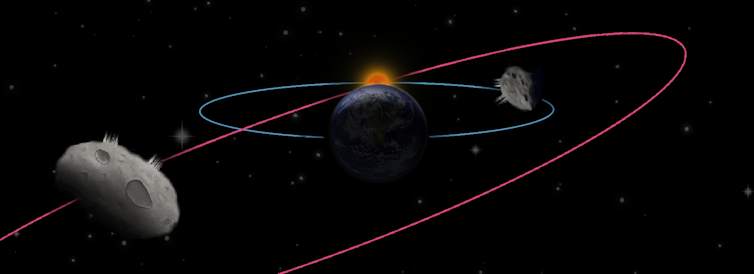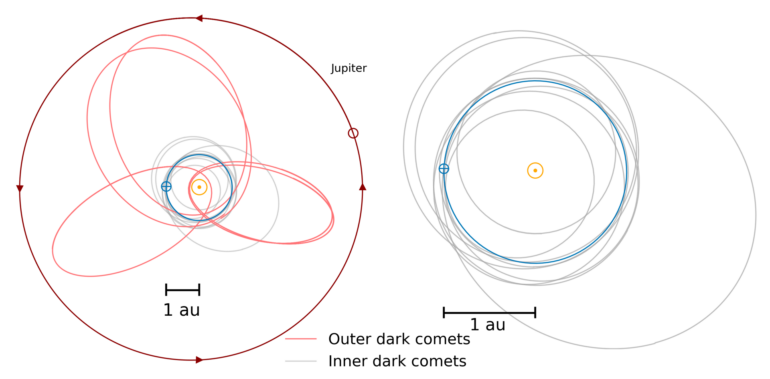The water that makes up the oceans acted as a key ingredient for the development of life on Earth. However, scientists still do not know where the water here on Earth came from in the first place.
One leading idea is that space rocks such as comets and asteroids delivered water to the Earth through impacts. As a planetary scientist, I’m curious about the kinds of space objects that could have led to the formation of the oceans. For the past few years, I’ve been studying a type of object that I called a dark comet – which could be just the culprit. In a new study my colleagues and I published in December 2024, we discovered two classes of these elusive dark comets

Dark comets fly through space, but unlike comets, they don’t have dust tails.
Adina Feinstein and NASA’s Earth Observatory
What is a comet?
The solar system is teaming with small bodies such as comets and asteroids. These space rocks were fundamental building blocks of planets in the early solar system, while the remaining leftovers are the comets and asteroids seen today.
These objects are also avenues by which material can be transported throughout the solar system. These small worlds can contain things such as rubble, ice and organic material as they fly through space. That’s why researchers see them as good potential candidates for delivering ices such as water and carbon dioxide to the Earth while it was forming.
Traditionally, the difference between comets and asteroids is that comets have beautiful cometary tails. These tails form because comets have ice in them, while asteroids supposedly do not.
When a comet gets close to the Sun, these ices heat up and sublimate, which means they turn from ice into gas. The gas heats up because of the sunlight and is then blown off the comet’s surface in a process called outgassing. This outgassing brings with it rubble and small dust grains, which reflect sunlight.
Asteroids, on the other hand, do not have cometary tails. Presumably, they are more like classic rocks – without ice on their surfaces.
What is a nongravitational acceleration?
The outgassing material from the surface of a comet produces a cometary tail and a rocketlike recoil. The fast moving gas pushes on the surface of the comet, and this causes it to accelerate. This process drives comets’ motion through space on top of the motion set by the gravitational pull of the Sun.
So, when comets outgas, they have what planetary scientists call nongravitational acceleration – motion that isn’t caused by the gravity of objects in the solar system. Planetary scientists typically measure the nongravitational accelerations of comets after detecting their cometary tails.
What are dark comets?
Our team identified a class of small bodies in the solar system that take some of the properties of both comets and asteroids. We called them dark comets.
These dark comets have nongravitational accelerations like…



